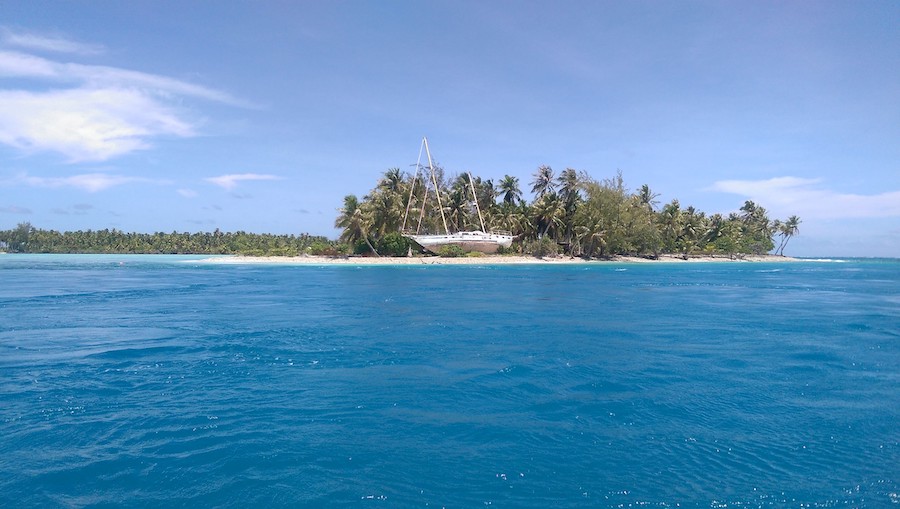
Rangiroa coral island
Viticulture today utilises knowledge collected over almost three thousand years. It was likely Phoenicians who first began growing grapes, then the Romans, followed by many generations of monks until the first generation of today’s winegrowers. Growers were continually seeking out, testing, varying and improving methods of cultivation and wine production. Today, winemaking culture is supported through highly efficient research laboratories using cutting-edge equipment, but nature still has the first word. Hundreds and thousands of experts the world over are continuously exchanging experience, and communicating their successes and failures.
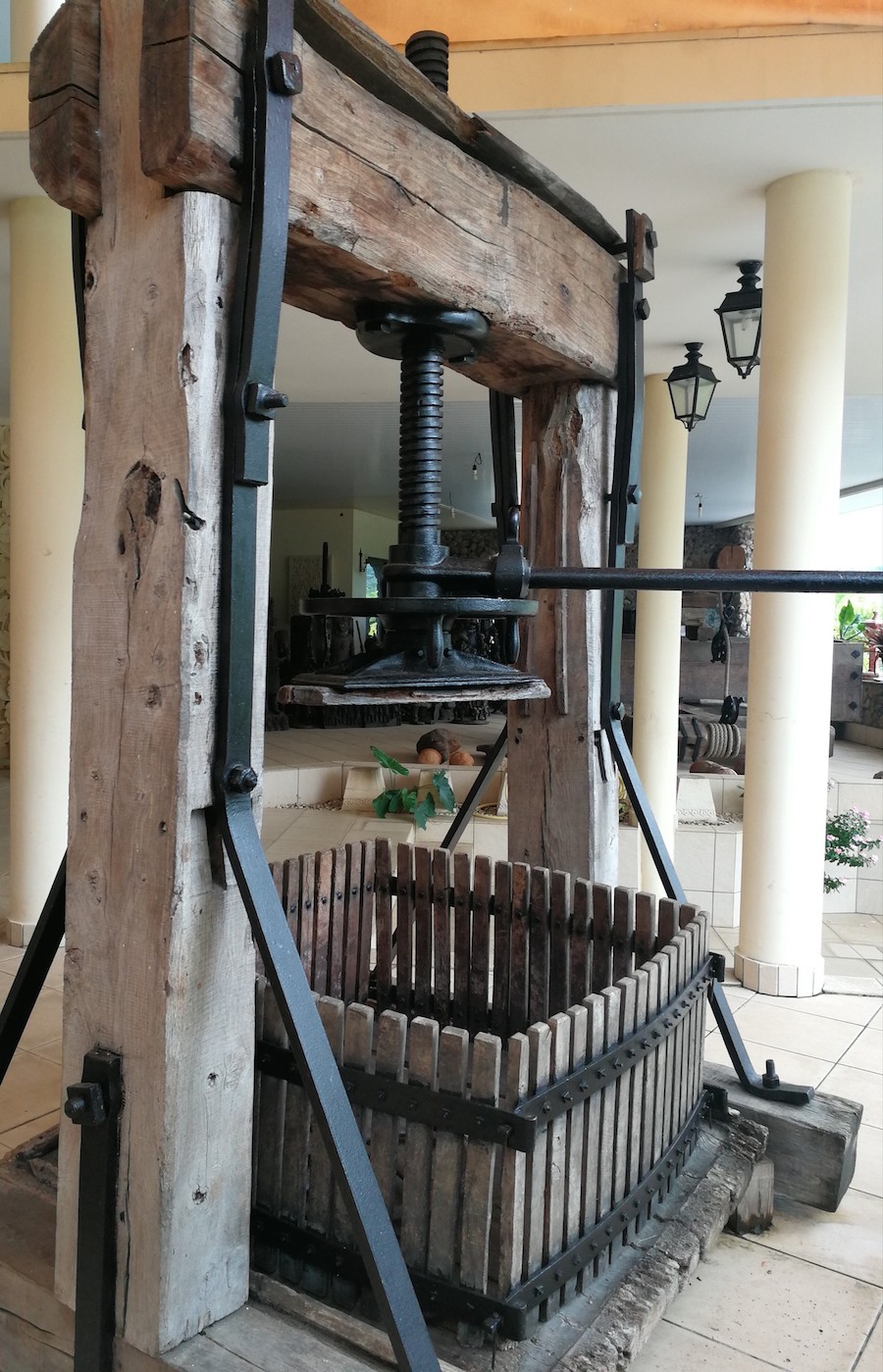
Wine press
Nothing of this sort occurred in Polynesia. Just one man alone made the decision to grow grapes here. He was unable to rely on any local experience of viticulture. All the questions had to be posed. What vine to use, what variety to plant? There are almost 4000 grape varieties. Where should the vines be planted? Nobody had any experience of growing vines on a coral bedrock in a tropical region. Furthermore, grape vines have annual cycles, and are used to alternating winter and summer periods. How can the particular and shorter incidence of sunlight at this latitude below the Tropic of Capricorn be utilised when grapes need long periods of sunlight in order to produce enough sugar, and colder nights to strengthen the vine, etc.?
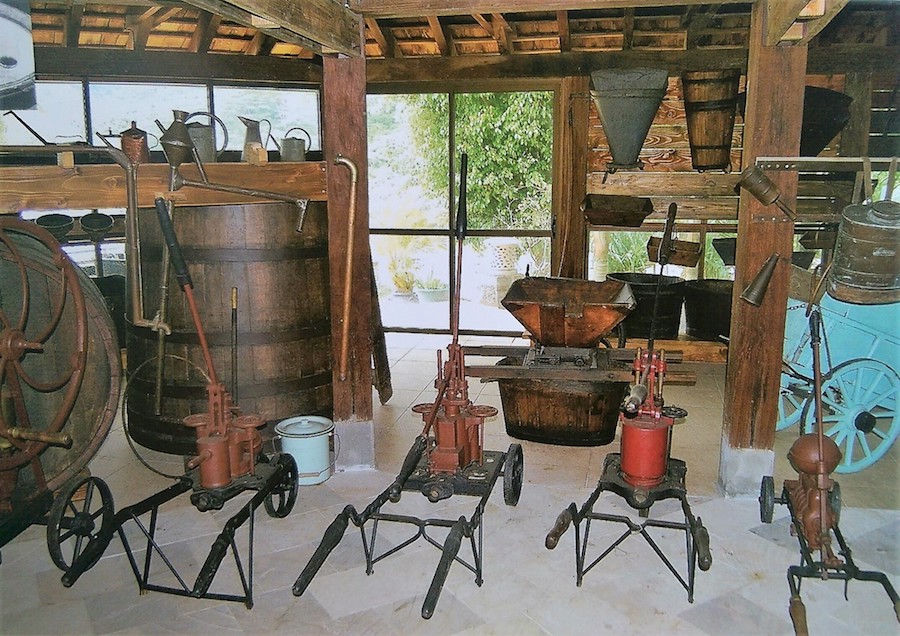
Wine museum in Tahiti
It was clear that growing vines in Tahiti would require starting from scratch. Dominique Auroy surprised everyone. Sceptics, wine-lovers, experts, specialists and scientists.
“He experienced every moment of his life with great intensity.” This could be his epitaph; someone who has constantly needed new challenges to live. Dominique was very young when he came to realise that we are only the masters of our own fate when we see our dreams fulfilled. “For me, life without risk, without excitement and without pleasure is not a life at all. When I first arrived in Polynesia 40 years ago, I did not realise that I would spend most of my life here and that I would experience such a fascinating period of innovations and fundamental changes.” The 1980s in his life were marked by a large project that he believed in despite the scepticism of many. He won them all over when he created an incredible and massive construction: a hydroelectric power plant in the middle of the forests, which twenty years later secures 50% of the hydropower for the whole of Tahiti.
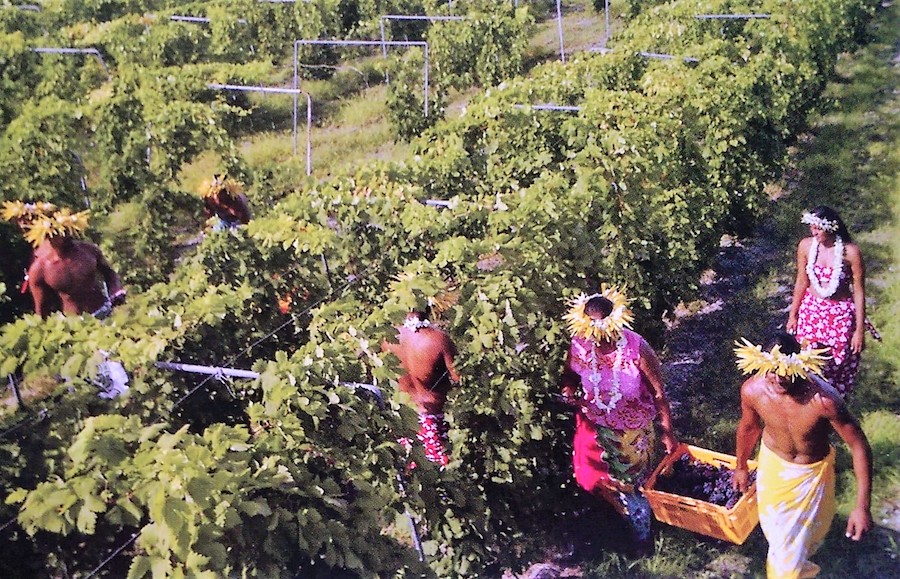
Grape harvest in Tahiti
His new challenge of growing grapes came later at the end of the 1990s. A few years before, he had become a shareholder in BraPac, a company that imported wine to Polynesia. He didn’t find the wine trade of great interest. Due to the high cost of importing wine to a country where a population of 250 000 people consumed 4 million bottles of wine a year, his plan to start growing vines locally began taking shape. But before getting down to growing grapevines, as a true visionary Dominique began working on the now renowned mineral water, Eau Royale. His next challenge was growing sugarcane and producing rum. In Tahiti, sugarcane is a native plant that has been exported and used in the Caribbean to produce rum. The Mana’o rum which Dominique Auroy produces is of the highest quality, and is highly rated amongst many experts around the world.
This was followed by a long and difficult journey from the first grape- vine shoot appearing to the first glass of wine being drunk. In the meantime, he founded a unique wine museum in Tahiti, and a branch of the fraternity of Burgundy wine enthusiasts, Chevaliers du Tastevin, which this year celebrated 25 years of operation here in style. “Only in wine have I found the harmony and balance so important for life,” con- cluded Dominique’s speech at the celebration, and he modestly watched as the whole hall rose to its feet in long applause.
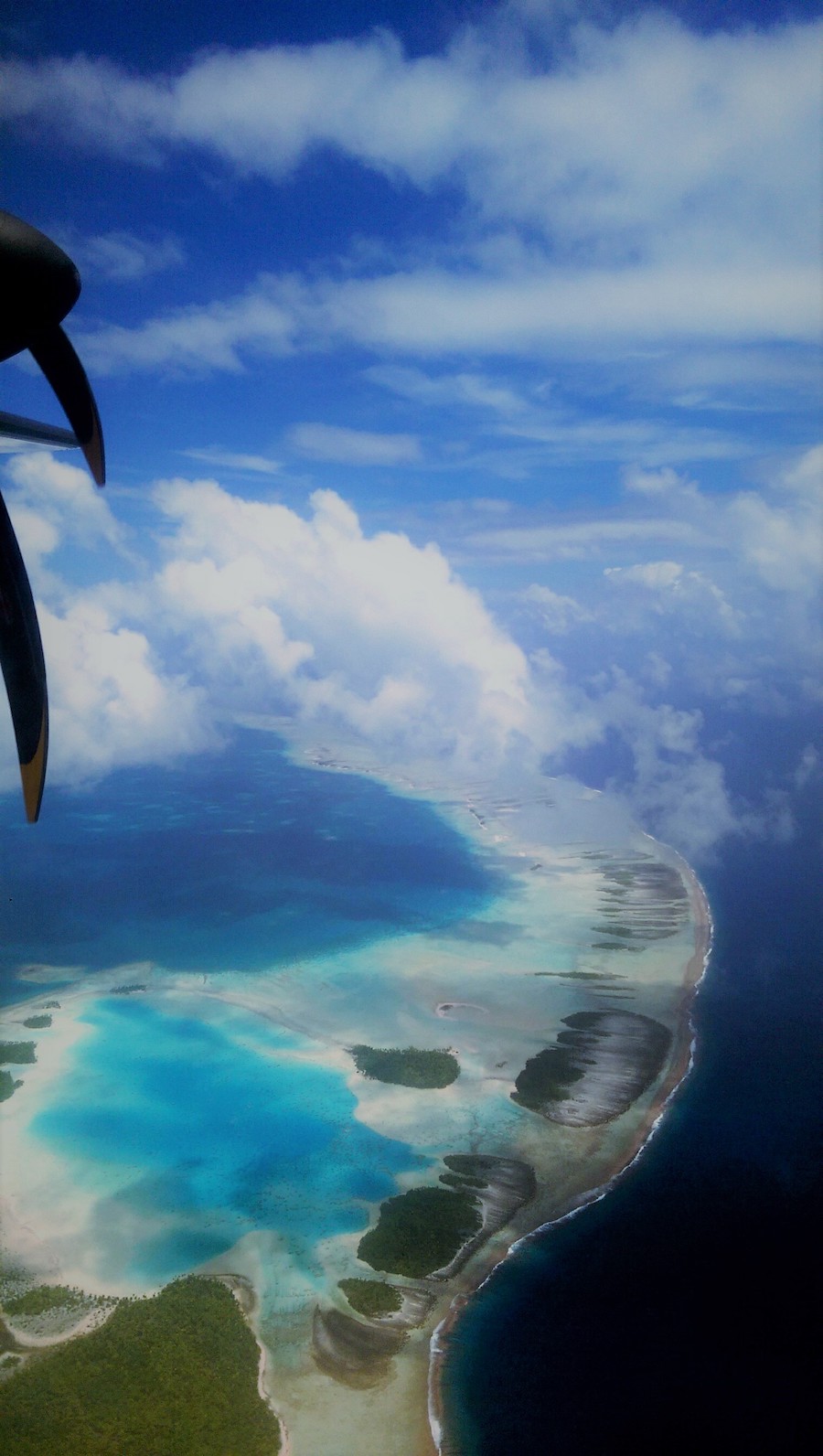
Rangiroa coral atoll
First the horizon appears in front of us; where the green-blue clear sea ends and the brilliant blue of the sky rises upwards. Here, in the South Pacific amongst the coral islands of Tuamotu on the atoll of Rangiroa, every visitor is enchanted by the nature-enveloped dazzling light of the tropic sun. The boat cuts through the calm turquoise lagoon, and suddenly in front of us a small coral atoll emerges, with a forest of coconut palms. We embark onto the shore and onto a wonderful sparkling white beach, but our surprise will come elsewhere, and what we see will arouse incredible emotions in us. At the end of the coral path lined with coconut palms, rows of grapevines suddenly appear, and the air is full of the aroma of ripe grapes. The courage and adventure of one man suddenly becomes clear. We find ourselves in the Dominique Auroy vineyards, in “Domaine de Rangiroa”. Local Polynesians are working hard under the hot sun. The harvest is over. The grapes (Italia and Carignan varieties) are put into small containers and transported by sea to the main island for processing. Thanks to the tropical climate, grapes are harvested twice a year. 40 000 litres of wine are produced annually, and this covers not just local consumption; the wine is also exported to Europe, Australia and New Zealand. It took almost ten years for the group of determined people around Dominique to manage to tame the local natural environment, and for the world to be able to enjoy the first glass of this now renowned crisp wine.
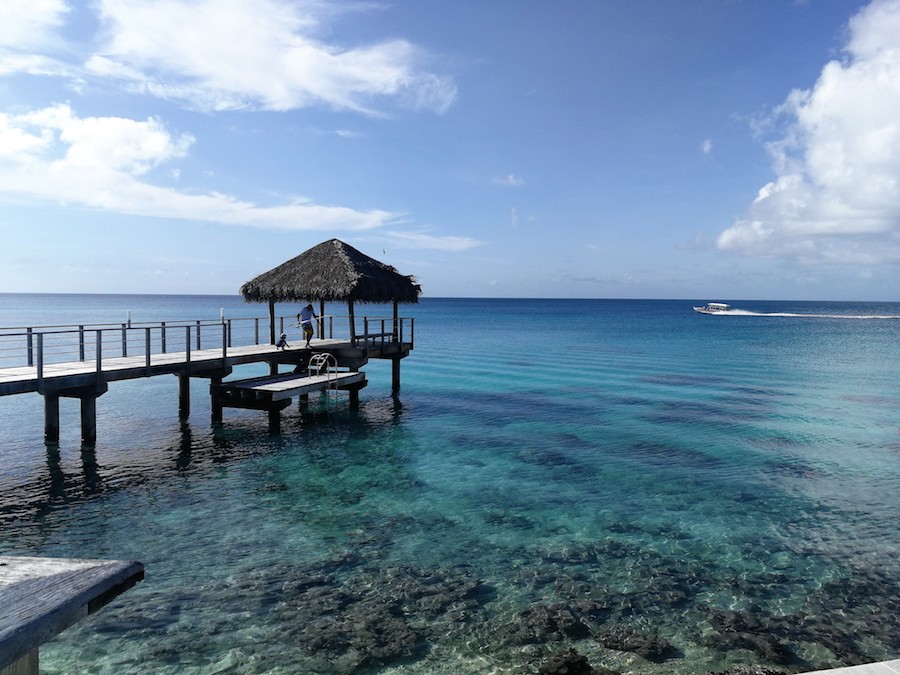
Rangiroa, coral island in French Polynesia in the Pacific Ocean
“I made the decision to take the path of adventure as my life’s journey,” smiles Dominique without pathos.
The results of many experiments often arouse admiration and respect in regard to the process used or developed rather than the results of the actual product. And so experts’enthusiasm and qualitative reviews of these white wines grown on the coral atoll, “Tahiti blanc de corail” and “Tahiti blancsec”,wasallthemoreimpressive.Thewineherecannotbecompared to any well-known white wines from the traditional wine-growing latitudes and climates. The first wine has a surprisingly rich composition of aromas. Its fresh fruity flavour of pineapple, ripe peach and dried apricots develops fully in the mouth. The second wine is full and golden, and very fresh, elegant and balanced in the mouth. It finishes with the flavour of tropical fruit blended with a subtle minerality.
“You’ve got to be patient and persistent in life. It’s unfortunate that some have not realised this and have tried to slow down this development from the beginning, but the pleasure is in overcoming obstacles.” Dominique Auroy has won his incredible wager twice over. Not only is it possible to grow grapevines on a coral island in Tahiti, but he has also demonstrated that the resulting wine is of high quality, today having won many awards. Here, Dominique has clearly extended the limits of human possibility and tamed a number of laws of nature.
“My greatest satisfaction is that the citizens of Rangiroa atoll have appropriated the vineyard, and they are proud of it. It is a wonderful reward. Wine production is about passion above all, and passion gives my life meaning and value. I trust that wine stands for all I have sought in life.”
Authors : Iva and Joseph Drebitko
Photos : authors’ archives

